Water in Uganda
Steven Dutch, Wells4Uganda, Inc., 1721 Badger Street, Green Bay, Wisconsin 54303-2621
Professor Emeritus, Natural and Applied Sciences, University of Wisconsin - Green Bay
Water Underground
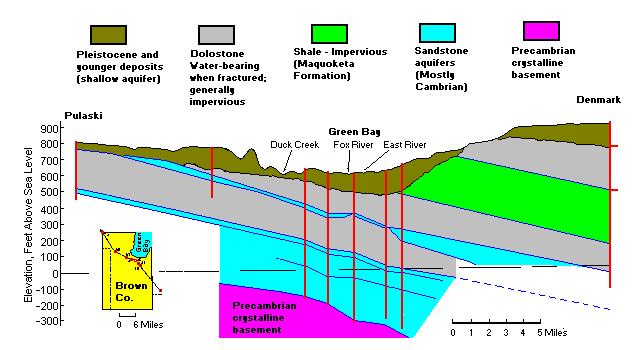
In much of the world, water occurs underground as in this diagram. This is a cross section through Green Bay, Wisconsin. This is real data from a U.S. Geological Survey report. The cross section is based on deep wells, shown in red. Some layers, shown in blue, are porous and good sources of water. These layers are called aquifers. Other layers, shown in gray and green, are not porous and can supply little if any water. On the surface are glacial deposits of sand, gravel, and clay, and these can supply small anounts of water for individual homes and farms.
Just to let you know where this is going, this is not how wells in Uganda work.
Below: this is how many people think water flows underground.
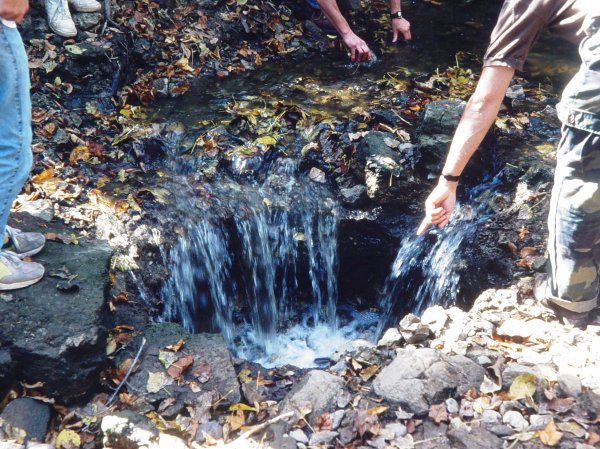
A couple of weeks earlier, heavy rain flooded this valley and the weight caused a small opening in the rocks to collapse, capturing all the stream water. People are fond of talking about "underground rivers," but, apart from a few caves, underground rivers do not exist.
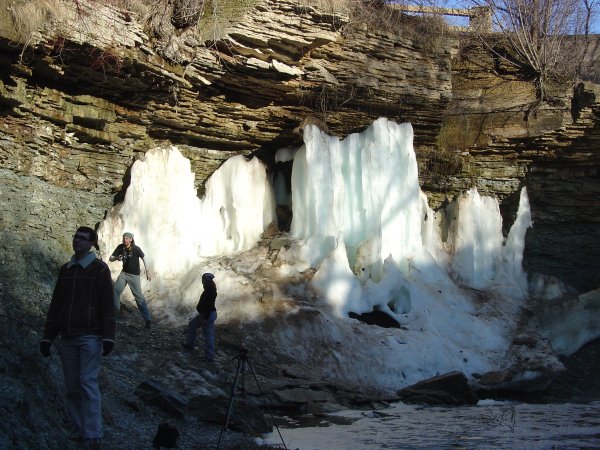
This is how water flows underground. The water is seeping though cracks and between layers in the rocks, and freezes here when it came out in the cold.
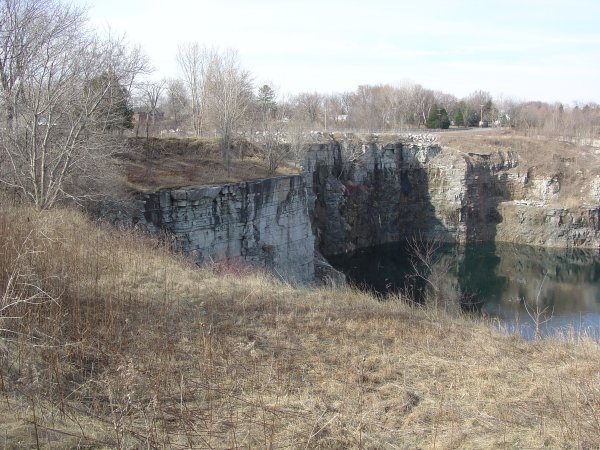
Here's another example. Water seeps through small cracks and between layers in the rock and causes the dark stains on the rock walls.
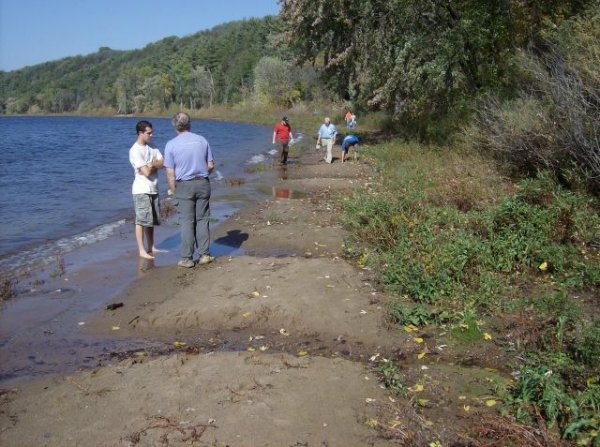
Here, rain and snow fall on the bluffs above, and water seeps downward and emerges as springs at the base, forming the regularly spaced small streams.
Groundwater in Uganda
In Uganda, and much of Africa, and many other parts of the world, there are no layered rocks providing convenient routes for underground water.
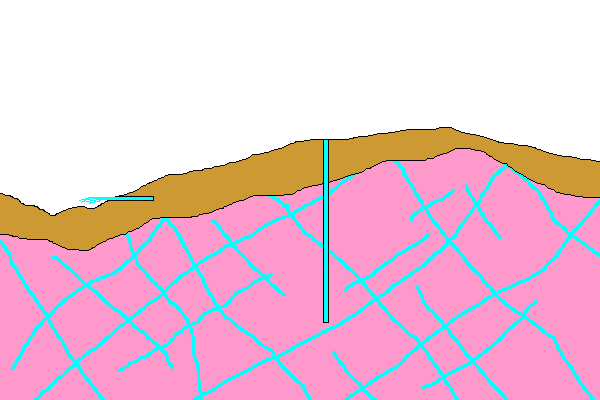
The bedrock in Uganda is mostly hard crystalline rocks of Precambrian age, such as granite, schist, and gneiss. Such rocks are not porous. What water they do have is located in fractures in the bedrock. It is possible to drill wells in these rocks and get water if there are enough fractures.
On top of the bedrock in many places is a thick layer of regolith, often many meters deep. This material forms when weathering breaks down the bedrock. This material is often porous and can supply local water needs. The wells built with funding by wells4uganda tap into the regolith as shown at left.
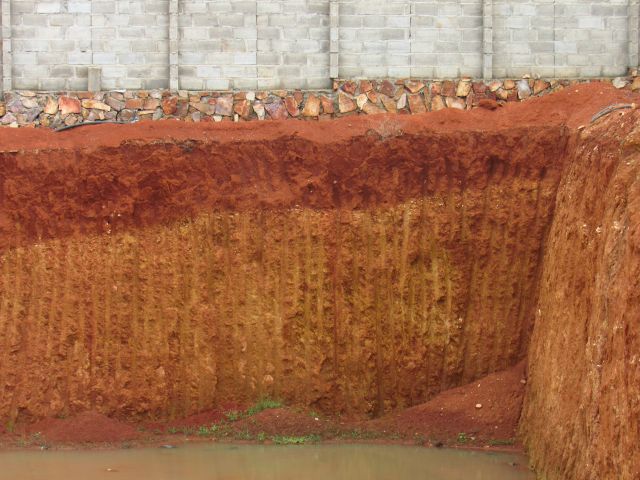
Above is an exposure of regolith several meters deep. The topmost red layer is actually a soil horizon, a zone of exceptionally intense chemical alteration. Most of the wells funded by wells4uganda get water from surface materials like this.
Why is it so red? Because in tropical, humid environments, everything soluble has been leached away. The soil is reduced to silica, aluminum and iron, and the iron is completely oxidized.
Getting Safe Water
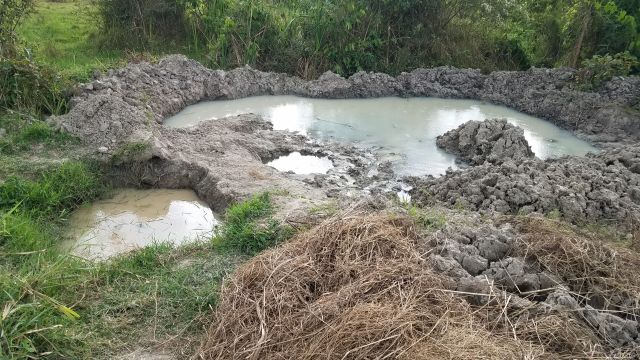
Typical of what a lot of water sources look like.
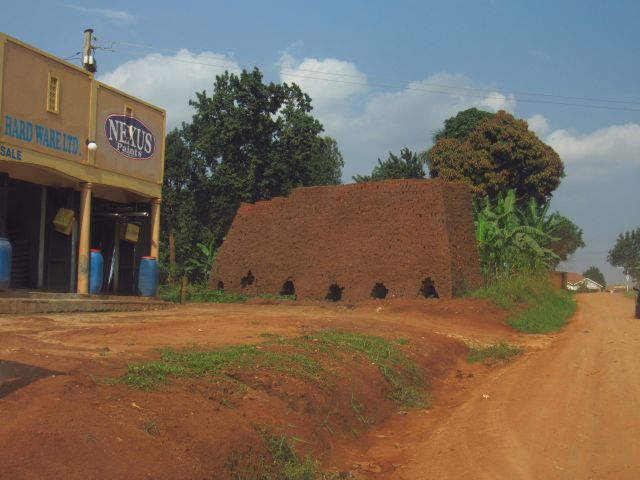
Brick kilns like this are very common in Uganda. Clay bricks are stacked to form an oven and fuel is lit inside to bake the bricks. Bricks are used to build the cores of many improved water sources.
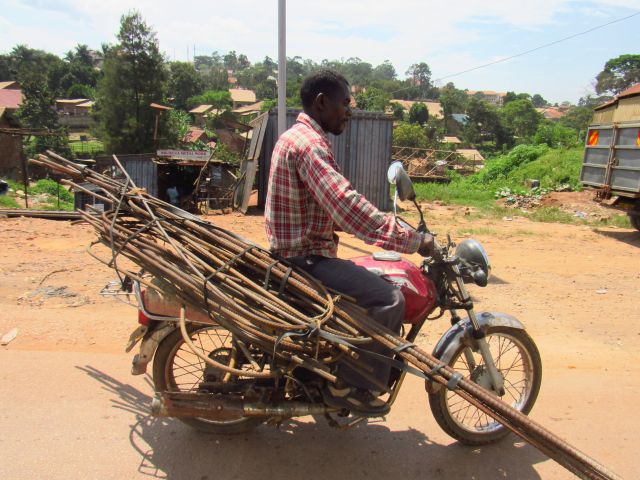
Access to remote sites is frequently by boda-boda, hired motor scooter taxis. They're also used for cargo like this shipment of rebar.
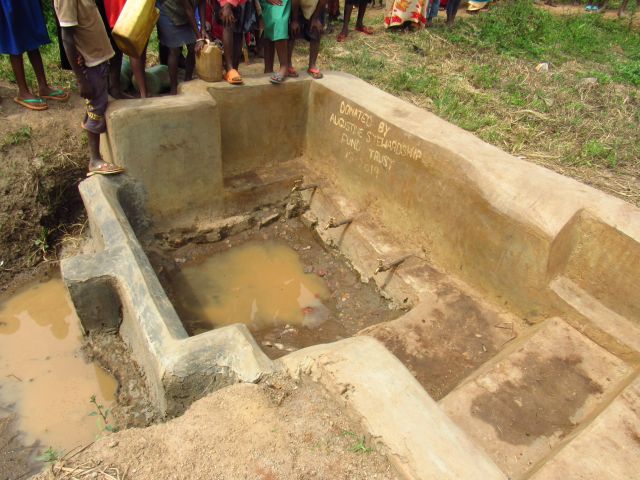
A finished water source.
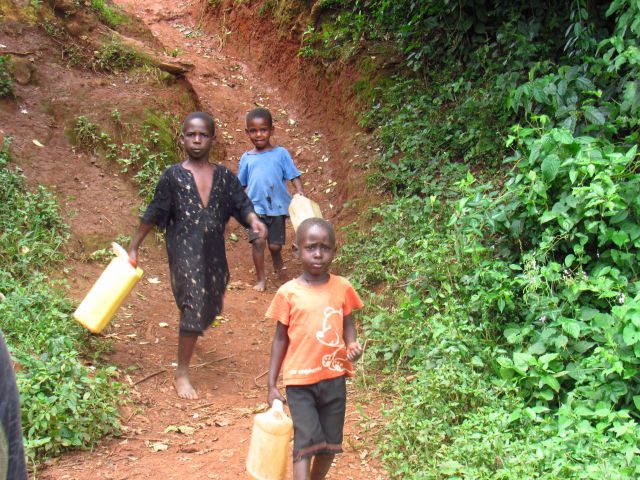
Scenes like this are common, so stairs are a frequent part of improvement projects.
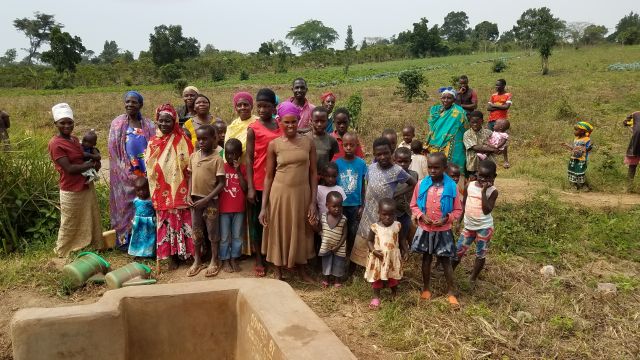
And a happy village.
Return to wells4uganda Home Page
Created 2 September 2011, Last Update 03 September 2018